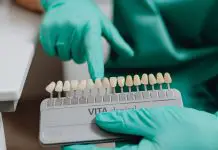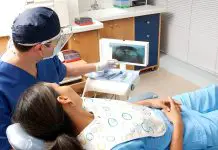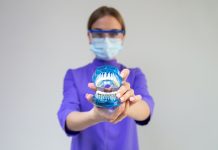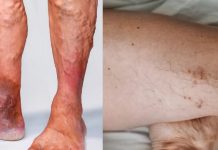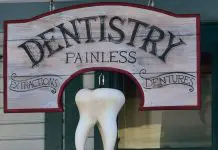Overview, Causes, & Risk Factors
A stroke is the death of brain tissue that occurs when the brain does not getenough blood and oxygen. Hemorrhagic stroke is a serious condition that occurswhen blood seeps into the brain tissue from a damaged blood vessel.
What is going on in the body?
A hemorrhagic stroke occurs when blood vessels in the brain burstand release blood into the area around the brain cells. The blood then damagesthe brain cells. The products released when cells die cause swelling in thebrain. Since the skull doesn’t allow much room for expansion, this swelling candamage the brain tissue even further.
What are the causes and risks of the condition?
A hemorrhagic stroke may be caused by:
high blood pressure
abnormal bleeding from blood-thinning medications, such as warfarin orheparin
hemophilia A orhemophilia B, which are blooddisorders thatprevent normal blood clotting
low numbers of platelets, a type of blood cell involved in bloodclotting. Low platelet counts are seen in a number of diseases and conditions,including acute infections and a severe allergic reaction known as anaphylactic shock.
rupture of a cerebralaneurysm, orweakened blood vessel wall within the brain
sickle cell disease, an inherited condition that results inabnormal red blood cells
a group of abnormal blood vessels within the brain known as an arteriovenous malformation or AVM
head injuries
eclampsia, a complication of pregnancy that causes high blood pressure in the mother
The person’s risk of hemorrhagic stroke is increased if other risk factors forstroke are also present.
The American Heart Association has recently issued guidelines for strokeprevention. The guidelines discuss risk factors for stroke in 3 categories:nonmodifiable, well-documented modifiable, and less well-documented orpotentially modifiable.
The nonmodifiable factors are ones that cannot be changed by the individualand include:
increasing age. A person’s risk of stroke doubles each year after age55.
race. Strokes occur approximately twice as often in blacks and Hispanics asthey do in whites.
gender. Men have a 50% higher chance of stroke than women do.
family history of stroke or transientischemic attack (TIA). A TIA is a short, reversible form of strokethatmay serve as an early warning sign of stroke.
Well-documented modifiable risk factors are those that can be changed by theindividual in conjunction with his or her healthcare provider. These factorsare linked to stroke by strong research findings, and there is documented proofthat changing the risk factor lowers a person’s risk of stroke. These factorsinclude:
high blood pressure
smoking
diabetes
asymptomatic carotidstenosis, ornarrowing of one of the arteries in the neck
sickle cell anemia,a blooddisorder that forms abnormal red blood cells
high cholesterol levelsin theblood, including total cholesterol andLDL or “badcholesterol.” Low levelsof HDL or “goodcholesterol” are alsocause for concern.
atrial fibrillation,an abnormalheart rhythm
Less well-documented or potentially modifiable risk factors for stroke arethose that have less proof of either a link to stroke or the impact ofmodifying the risk factor. These factors include:
obesity
a sedentary lifestyle with inadequate physical activity
alcohol abuse
high blood levels of homocysteine, a blood component sometimes associatedwith a higher risk of stroke
drug abuse
blood disorders, such as blood that clots easily or deficiencies of variousblood components
hormone replacementtherapy (HRT).The AHA currently states that the risk of stroke associated with HRT appearslow but needs further study.
use ofbirth control pills, or oralcontraceptives
inflammatory processes, such as a chronic infection with chlamydia
Several recent studies have identified factors that seem to increase ordecrease the risk of stroke in particular groups of people. These studies,which warrant further investigation, include these findings:
People who were treated for highbloodpressure with thiazide diuretics, such as hydrochlorothiazide, hadasignificantly lower stroke risk than people on ACE inhibitors or calciumchannel blockers.
Women ages 15 to 44 who had 2 drinks of wine a day had a 40% to 60% lowerrisk of stroke than women who did not drink alcohol.
Phenylpropanolamine, a compound contained in appetite suppressants and coldremedies, significantly increased the risk of hemorrhagic stroke in women 18 to 49years of age. The Food and Drug Administration (FDA) has since askedmanufacturers to remove phenylpropanolamine from their product lines.
In one study, people who were treated in emergency departments fortransient ischemic attacks (TIA) had a 25% chance of having a stroke or otherserious health event within the next 90 days.
Symptoms & Signs
What are the signs and symptoms of the condition?
Strokes can cause many different signs and symptoms, depending on the area ofthe brain that is damaged. Some people have multiple areas of damage. Moststrokes begin suddenly, develop rapidly, and cause brain damage within minutes.Signs or symptoms may include:
problems with movement, such as weakness, clumsiness, or paralysis.These are often on only one side of the body. In some cases, people may onlyhave weakness or clumsiness in their hand. In other cases, one entire half ofthe body becomes paralyzed.
headache
numbness or a lack of feeling, which is also often on only one sideof the body
speech impairments,includingslurred speech or difficulty finding the correct word
difficulty doing math or writing
difficulty understanding speech or writing
inability to recognize family members or common objects
dementia, a condition that affects memory, understanding, and theability to carry out the normal activities of daily life
visual impairment,includingblurred vision or total vision loss
hearing impairment
personality changes
difficulty swallowing
balance problems, known as ataxia
coma
the inability to breathe on one’s own. This may require a person to be puton an artificial breathing machine, or ventilator.
Diagnosis & Tests
How is the condition diagnosed?
Cranial MRIs andcranial CTscans may be ordered to show the type, size, and location of thestroke.
Blood tests may be done if the person is on blood-thinning medication. Blood flow tests using ultrasound or angiography may beused.
Prevention & Expectations
What can be done to prevent the condition?
Some hemorrhagic strokes can be prevented through careful controlof the underlying disease or disorder. Careful management of sickle cell anemia or hemophilia A or B, for example, can reduce hemorrhage strokes. For individuals with diagnosedcerebral aneurysms,guidelines formonitoring and treatment should be followed.
Hemorrhagic stroke from head injuries can be minimized by following sportssafety guidelines for children, adolescents, and adults.
The American Heart Association guidelines for stroke prevention address bothmodifiable and less well-documented or potentially modifiable risk factors.
Measures to reduce the modifiable risk of high blood pressure, a leading cause of stroke, include:
measurement of bloodpressure inadults at least every 2 years to screen for high blood pressure
weight control
physical activity
moderation in alcoholintake
moderate sodium intake
for those who smoke, quittingsmoking
medications to treat high blood pressure if the person’s blood pressure isover 140/90 after 3 months of these lifestyle modifications, or if the initialblood pressure is over 180/100
Other measures to reduce an individual’s modifiable risk factors for stroke mayinclude:
smoking cessationusing nicotinepatches, counseling, and formal smoking programs
control of blood sugar levels in a person with diabetes through medication, diet, and exercise
the use of ramipril in people with diabetes. A recent study showed that people with diabetes have a 33% lower risk of stroke if they take ramipril.
careful evaluation of asymptomatic carotid stenosis to determine the need for surgery. Coronary artery surgery, such as an endarterectomy,may beindicated. An endarterectomy opens the narrow portion of the artery andincreases the blood flow to the brain. People with carotid stenosis shouldalso work closely with their healthcare providers to control other risk factorsfor stroke.
semiannual screening of children with sickle cell anemia, using ultrasound to determine the child’s riskofstroke
treatment of atrialfibrillationwith blood thinners such as aspirin or warfarin, depending on the person’s ageand other risk factors
monitoring of high levels of total cholesterol or LDL, as well as lowlevels of HDL. Depending on the blood levels and the person’s other riskfactors, medications to lower cholesterol may be given.
Measures to reduce less well-documented or potentially modifiable risks forstroke may include:
weight reduction in overweight persons
30 or more minutes of moderate exercise a day for most individuals.People with heart diseaseordisabilities should be in a medically supervised exercise program.
a healthy diet for heartdisease,containing at least 5 fruits and vegetables a day
for those who drink alcohol,drinking in moderation. The AHA defines moderate drinking as no more than 2drinks a day for men and 1 drink a day for women.
seeking treatment for drugabuse
monitoring of blood levels of homocysteine. For most individuals, awell-balanced diet following the food guide pyramid will provide enough folicacid and B vitamins to maintain a healthy homocysteine level. For people withelevated homocysteine levels, supplements containing folic acid and B vitaminsmay be recommended.
avoiding the use of oral contraceptives in women with other stroke riskfactors
Some people have early warning signs that they are at risk for strokes. Themost common warning sign is what is known as a transient ischemicattack, or TIA. This is a type of reversible stroke that often goesaway after a few minutes. These people can often get treatment that willprevent a stroke in the future. For instance, people may be advised to takeaspirin or have carotid artery surgery to correct a blockage in aneck artery.
What are the long-term effects of the condition?
Strokes can cause death or permanent disability. Though many people recoversome function in the first several months after a stroke, others show noimprovement. Some people have several small strokes over time and slowly getworse with each one.
What are the risks to others?
Strokes are not contagious and pose no risk to others.
Treatment & Monitoring
What are the treatments for the condition?
If someone has the early warning signs of stroke, the emergency medical system should be contactedimmediately.These signs include a sudden onset of:
severe headache
weakness or numbnessof the face,arm, or leg, especially on one side of the body
dizziness
trouble walking or loss of balance, known as ataxia
confusion
speech impairments,includingtrouble speaking or understanding speech
visual impairments
Supportive therapy may also be needed with some strokes. This may include an artificial breathing machine, orventilator, and an artificialfeeding tube if the person cannot swallow.
Rehabilitation services can help to improve a person’s function after a stroke.Physical therapy and other therapy, such as speechtherapy or occupational therapy, may be used to maximizerecovery.
What are the side effects of the treatments?
Side effects depend on the treatments used. For example, a ventilator may sometimes cause damage to thelungs or aninfection.
What happens after treatment for the condition?
After the person is stable, treatment of the risk factors for stroke, as wellas the cause of the stroke, is important to prevent further strokes. Forinstance, stopping smoking and controlling high blood pressure, diabetes, and highcholesterolare advised for most people.
Many people need assistance of one form or another after a stroke. This mayrange from using a walking cane to needing 24-hour-a-day skilled nursingcare. Ongoing therapy to improve function is usually advised for at least 6months if the person is able.
How is the condition monitored?
People having a stroke are often admitted to the hospital for close monitoring.Once the person is stable, he or she can often be sent home or to a skillednursing facility or rehabilitation center for further therapy. Any new orworsening symptoms should be reported to the healthcare provider.
Article type: xmedgeneral















